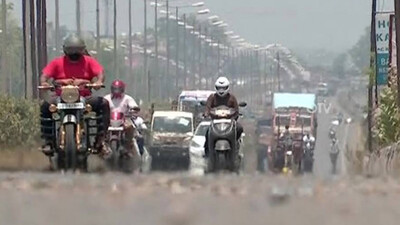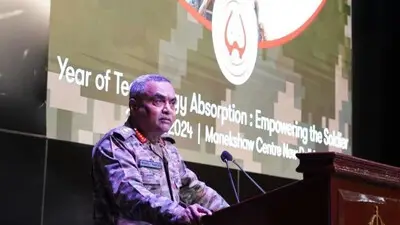Recommended Stories
At a time when there is a lot of talk about the Artificial Intelligence (AI), Chief Justice of India (CJI), Dhananjaya Y Chandrachud on Saturday said that AI has a flipside as well.
While addressing a programme on 'Digitisation, Paperless Courts and e-initiatives' at Odisha Judicial Academy in Cuttack, CJI DY Chandrachud said the digital infrastructure we intend to create is firstly paperless courts. Secondly, virtual courts and Delhi has been leading in virtual courts particularly in area of traffic challans.
While referring to the Live streaming, the CJI said that today most High Courts are doing Live streaming. There are clips on Youtube of the Patna High Court judge asking an IAS officer why he was not appropriately dressed or somebody in Gujarat HC judge asking a lawyer why she is not prepared with her case are going around.
"Lot of funny stuff is going on in YouTube which we need to control, because this is serious stuff. What happens in the court is extremely serious stuff," said CJI DY Chandrachud.
#WATCH | The digital infrastructure we intend to create is firstly paperless courts. Secondly, virtual courts...Today most HCs are doing live streaming on YouTube. Clips of the Patna HC judge asking an IAS officer why he is not appropriately dressed or Gujarat HC judge asking a… pic.twitter.com/vMPP62uB8V
— ANI (@ANI) May 6, 2023
“Live streaming that we are doing has a flipside and we judges need to be trained as every word which we judges say in court is up in public realm in the age of social media. We realise this when we live stream constitution bench arguments. Very often citizens don't realize that what we say in the course of hearing is to open a dialogue. So live streaming or interface with social media places new demands on us as judges. We need to create a robust cloud infrastructure for live streaming,” the CJI said.
According to the Chief Justice of India, creating Cloud infrastructure for live streaming and it is perhaps one way to have a central national cloud infrastructure and additional hardware for courts. Next important area is technical advancements which phase 3 envisages and this will refer to software developments, the use of AI, blockchain, and digital accessibility, the CJI said.
“We are conscious of the fact that Artificial intelligence has a flip side as well. For instance, it would be very difficult in allowing artificial intelligence to tell us what sentence to hand down following a conviction in a criminal case,” said the CJI.
According to the CJI, many courts across the world have experimented with artificial intelligence. At the same time, AI is replete with possibility. How do you expect a judge to digest the evidence in a statutory appeal in a record involving 15k pages. AI can prepare the entire record for you.
“We have been using AI for transcription of the proceedings of the constitution bench of the Supreme Court. The transcript is provided to lawyers to clean up any errors. There were some funny errors as one of the lawyers got confused, it was obviously cleaned up and uploaded,” the CJI added.
The Chief Justice of India said that the purpose of pitchforking technology is not to place it away from citizens but to reach out to the common citizens of the country. The total outlay for Phase 3, which is going to be between 2023-27, is 7210 Crores. The outlays for Phase I and Phase II was just a fraction of Phase III and look at the enormity of the fund which the Government of India is now providing.
“When we pitched for this budget, not a single rupee was cut by the union government,” the CJI added.
We have recently launched the LGBTQ handbook. We are almost on the anvil of launching a legal glossary on gender-inappropriate terms. If you read a judgment on 376, I am sure all of you have come across phrases that the "victim was ravished by the appellant" or phrases such as… pic.twitter.com/2uKdEySuin
— ANI (@ANI) May 6, 2023
- Reported by:
- GAUTAM PANDA













